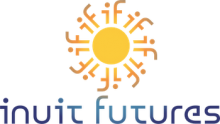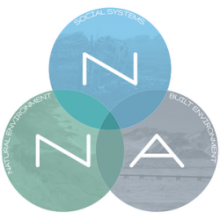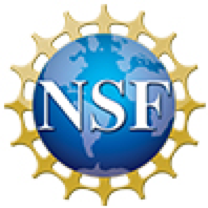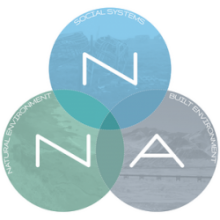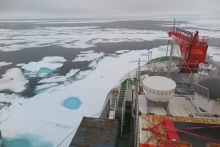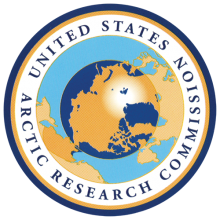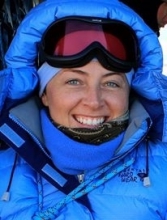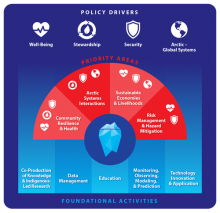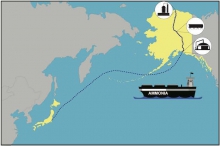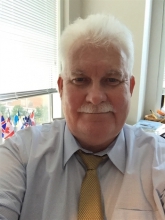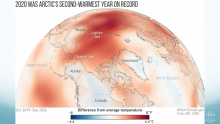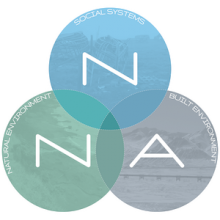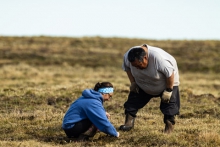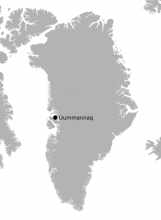Witness Community Highlights is an online publication launched in May 2017 to complement the regular publications of Witness the Arctic. It was developed in response to community feedback identifying the need for a monthly publication to highlight 1–2 Arctic research efforts and other timely items of interest to our readers. Community Highlights is distributed monthly via our Witness the Arctic mailing list of over 8,600 subscribers.
Investing in Inuit Futures
The Inuit Futures in Arts Leadership: The Pilimmaksarniq / Pijariuqsarniq Project supports Inuit and Inuvialuit to become leaders within their communities in all areas of the arts. The project focuses on providing hands-on mentoring and training opportunities for Inuit Futures students/learners who undertake research in the arts, participate in other Inuit-led artistic projects, or gain valuable skills and knowledge by participating in paid internships within our network of arts institutions across the Canadian North and South. These experiences improve their readiness for careers in the arts as well as creating a new generation of knowledge creators.
By: Napatsi Folger, alumna of the Inuit Futures in Arts Leadership: The Pilimmaksarniq/Pijariuqsarniq Project, and Associate Editor for Inuit Art Quarterly
Introduction by Danielle Aimée Miles, Research and Administrative Coordinator, Inuit Futures in Arts Leadership: The Pilimmaksarniq / Pijariuqsarniq Project
Planning Grants Awarded by NSF's Navigating the New Arctic Program
As part of its Fiscal Year 2021, NSF's Navigating the New Arctic Program awarded funding to several Planning Grants. These grants support efforts of developing convergence teams from disparate disciplines and communities to tackle projects of larger scope in the future.
Editors: ARCUS Staff
Jennifer Mercer Appointed as Section Head for the Arctic Sciences Section, NSF Office of Polar Programs
Dr. Jennifer Mercer has been appointed as Section Head for the Arctic Sciences Section within the Office of Polar Programs effective October 25, 2021. Mercer has a broad scientific background with extensive field experience in both the Arctic and Antarctic. She has been conducting research and leading projects in remote field locations for over two decades with efforts on all seven continents, as well as four ocean research vessels.
By: NSF Office of Polar Programs Staff
NSF's Navigating the New Arctic Program: Recently Funded Projects
In a special report, "NSF expands Arctic investment through the Navigating the New Arctic Initiative" published in early September 2021, NSF announced the funding of 17 projects as part of its Fiscal Year 2021 awards for the NNA program. The awards, totaling $32 million, support 96 investigators across 38 institutions, as well as students, and postdoctoral scholars. The NNA program, with its focus on convergence research across the social, natural, and built environment, supports projects with the potential for meaningful engagement with Arctic communities. Summaries of funded projects are highlighted in this article.
Editors: ARCUS Staff
Interview with ARCUS Member Sasha Liedman
A new ARCUS Member Profile product is featured in this interview between ARCUS volunteers Katherine Schexneider and Sasha Leidman. This interview and the Member Profile are the first in a new series developed to highlight the work of our individual members and help ARCUS members get to know one another, by supporting connections across disciplines, communities, and career paths.
By: Katherine Schexneider, ARCUS Volunteer
Ethnography of and during the Pandemic Era in Alaska
Ongoing research funded through an NSF RAPID grant, seeks to identify the sources of Indigenous community strength and resilience amidst the COVID-19 pandemic at two sites in Alaska: the village of Gambell, St. Lawrence Island, and Galena, in interior Alaska. Working collaboratively with community-based partners, researchers are investigating local pandemic responses in the areas of safety, security, and vitality.
By: Sveta Yamin-Pasternak, University of Alaska Fairbanks (UAF); Christina Edwin, Community-Based Partner; Marina Koonooka, Community-Based Partner; Jake Pogrebinsky, Community-Based Partner; and Igor Pasternak, UAF
Accelerated Sea Ice Loss in the Wandel Sea Points to a Change in the Arctic’s Last Ice Area
The Arctic Ocean’s Wandel Sea is the easternmost sector of the Last Ice Area, where thick, old sea ice is expected to endure longer than elsewhere. Nevertheless, in August 2020 the area experienced record-low sea ice concentration. Led by a team from the University of Washington Applied Physics Laboratory, investigators used satellite data and sea ice model experiments to determine what caused this record sea ice minimum.
By: Axel J. Schweiger, University of Washington Applied Physics Laboratory (UW/APL); Michael Steele, UW/APL; Jinlun Zhang, UW/APL; G. W. K. Moore, University of Toronto; and Kristin L. Laidre, UW/APL.
One Health, One Future 2021
The University of Alaska Center for One Health Research hosted the virtual One Health One Future conference in April 2021. This international conference brought together scientists, health care providers, policy makers, agency workers, students, and community members to present and discuss One Health issues facing the circumpolar north.
By: Arleigh Reynolds, Director University of Alaska Fairbanks (UAF) Center for One Health Research; Kelsey Nicholson, Program Administrator, UAF Center for One Health Research; and Hannah Robinson, Master's Program Coordinator, UAF Center for One Health Research
Studying the Potential for Changing Global Seaborne Trade Flows as a Consequence of a Thawing Arctic Ocean
A changing climate has brought a thawing of the Arctic Ocean with increasingly viable passageways. This opening of the Arctic routes over coming years is likely to lead to a shift in the flow of cargo across world seaborne trade lanes. This NSF-funded NNA project is developing capabilities to forecast conditions along these passageways to understand related risks.
By: Elise Miller-Hooks, George Mason University; Sara Cobb, George Mason University; Celso Ferreira, George Mason University; Anne Garland, ARIES; Ralph Pundt, Maine Maritime Academy; Thomas Ravens, Consultant; and Jinlun Zhang, University of Washington
Circumpolar Collaboration: An Arctic Youth Perspective
From her experiences organizing an international Arctic youth symposium, as well as related volunteer and travel experiences, Michaela Stith observes that solutions to systemic problems like climate change and racism will not come with a quick or technical fix. It will take a culture shift to develop deep relationship-building and policy change.
By: Michaela Stith, Program Assistant, Polar Institute, the Wilson Center
Observing the Cycle of Ice through Fresh Eyes
The NSF-funded Fresh Eyes on Ice project is revitalizing and modernizing river and lake ice observations in Alaska through archiving and analyzing existing historic datasets, remote sensing, field studies, real-time cameras and buoys, and community-based monitoring. Documenting changes in break-up, freeze-up, and other ice dynamics of river and lake ice help detect responses to climate change.
By: Chris Arp, Water and Environmental Research Center, University of Alaska Fairbanks (UAF); Katie Spellman, International Arctic Research Center, UAF; Laura Oxtoby, Water and Environmental Research Center, UAF; and Dana Brown, Institute of Arctic Biology, UAF
Broadening Participation in Freshwater Ice Science and Education with Fresh Eyes on Ice
The community science dimension of the Fresh Eyes on Ice project establishes a baseline of geographically diverse measurements and observations, and ground-truthing data for comparison with the other types of data being collected remotely. The project elevates local perspectives on these data, provides opportunity for ice safety information sharing, and facilitates science learning.
By: Katie Spellman, International Arctic Research Center, University of Alaska Fairbanks (UAF); Laura Oxtoby, Water and Environmental Research Center, UAF; Chris Arp, Water and Environmental Research Center, UAF; and Dana Brown, Institute of Arctic Biology, UAF
President Biden Changes Leadership of US Arctic Research Commission
The White House informed US Arctic Research Commission (USARC) Commissioners and staff that President Biden designated David Kennedy as Chair of the USARC, effective 3 March 2021. Kennedy succeeds Jon Harrison as Chair, and both continue to serve on the commission. Mr. Kennedy has over 50 years of experience and leadership in science, research, environmental management, and development of legislation and national initiatives.
By: Cheryl Rosa, US Arctic Research Commission Deputy Director
Appointment of Dr. Jennifer Mercer as Acting Section Head for NSF Office of Polar Programs Arctic Sciences Section
Dr. Jennifer Mercer has been appointed as Acting Section Head for NSF Office of Polar Programs Arctic Sciences Section. Mercer has a broad scientific background with extensive field experience in both the Arctic and Antarctic. She has been conducting research and leading projects in remote field locations for over two decades with efforts on all seven continents, as well as four ocean research vessels.
By: Terri Edillon, Lead Communications Specialist, NSF Office of Polar Programs
Request for Public Comment on the Draft Arctic Research Plan 2022-2026
The Interagency Arctic Research Policy Committee (IARPC) has released a draft of the 2022–2026 Arctic Research Plan. The plan identifies priorities for US interagency collaboration and partnerships that will increase the value of the federal research investment in the Arctic and for Arctic residents. IARPC seeks input on priority area goals, justifications, and potential partners; the foundational activities; and the implementation and metrics for measuring success. Please submit comments by 11 June 2021.
By: Liz Weinberg, Web Manager and Community Coordinator, Interagency Arctic Research Policy Committee
DOE’s Arctic Innovator Fellowship Promotes Technology Projects in Alaska
The US Department of Energy's Arctic Advanced Manufacturing Innovator Program supports fellowships for early career professionals with fresh ideas and innovative approaches to address fundamental hard technology manufacturing challenges. Nathan Prisco, the program's first Innovator Fellow, shares overviews of two technology projects in the Alaskan ecosystem that have potential for broad global impacts.
By: Nathan Prisco, DOE Advanced Manufacturing Office Arctic Innovator Fellow at the University of Alaska Fairbanks
NSF Arctic Sciences Section Head, Simon Stephenson, to Retire
Simon Stephenson, Section Head, Arctic Sciences Section, in the Office of Polar Programs (OPP), will retire at the end of February 2021, concluding an extraordinary decades-long career at the National Science Foundation (NSF). Highlights of his contributions to and support of the research community are highlighted here.
By: Renee D. Crain, Program Officer, Arctic Research Support and Logistics, Office of Polar Programs, National Science Foundation
The 2020 Arctic Report Card
The 15th annual NOAA Arctic Report Card was released on 8 December 2020 as part of the American Geophysical Union 2020 Fall Meeting. The Arctic Report Card, initiated in response to the need for concise and timely Arctic information, serves as a readily available resource for viewing the rapid changes that have engulfed the region. Taken as a whole, the story is unambiguous. The transformation of the Arctic to a warmer, less frozen, and biologically changed region is well underway.
By: Rick Thoman, Climate Specialist with the Alaska Center for Climate Assessment and Policy; and Jacqueline Richter-Menge, Arctic Report Card Editor
NSF's Navigating the New Arctic Program: Projects Funded in 2020
Navigating the New Arctic (NNA), one of NSF's 10 Big Ideas, has supported fundamental convergence research across the social, natural, environmental, engineering, and computing and information sciences since 2017. A wide range of topics and regions is represented in the 21 Arctic research projects that were funded in 2020. This article includes a list of the 2020-funded NNA projects, with brief descriptions.
Editors: ARCUS Staff
Creating Institutional Changes to Improve Indigenous Students' Learning Experiences
Kimberly Kivvaq Pikok shares observations from her experiences as an Indigenous student pursuing a degree in wildlife biology and questions how institutions could change courses and the classroom environment to make everybody feel capable and accepted in their field. As one of the three Arctic Indigenous Scholars selected in 2020, Kimberly will have opportunity to discuss these issues with officials at NSF and other agencies in Washington DC.
By: Kimberly Kivvaq Pikok, Utqiaġvik, Alaska
The Migration in Harmony RCN Investigates the Drivers and Consequences of Arctic Coastal Migrations
Migration in Harmony, a three-year international, cross-disciplinary network funded by NSF, aims to facilitate open communication and build new collaboration teams of scientists, stakeholders, and practitioners to investigate how drivers and consequences of Arctic coastal migrations intersect and interact with one another—and explore the related implications for society.
By: Victoria Herrmann, The Arctic Institute, President and Managing Director
Seasonal Forecasting of Arctic Sea Ice and Atlantic Hurricanes
Accelerated Arctic sea ice melt and increased Atlantic hurricane activity are often quoted as tangible manifestations of ongoing climate change. The desire to improve forecasting capabilities at seasonal time scales has been a primary concern in the respective scientific communities. Fueled by advances in fundamental research on climate predictability and by continued dialogue between the scientific community and stakeholders, expectations can legitimately be high for the years to come.
By: François Massonnet, UCLouvain; Louis-Philippe Caron, Barcelona Supercomputing Center; Philip J. Klotzbach, Colorado State University; Tom J. Philp, London School of Economics; and Julienne Stroeve, National Snow and Ice Data Center and the University of Manitoba.
Inuit Food Sovereignty and Self-Governance — A Healthy Arctic
This Inuit-led research and report, resulting from a three-year co-production of knowledge project, illuminates the unique and rich Inuit values and management practices that have successfully safeguarded the Arctic for thousands of years. The report further links Inuit Food Sovereignty to holistic and adaptive management strategies that can ensure the food security and well-being of Inuit throughout the Arctic for generations to come, along with the health of the entire ecosystem.
Provided by: Carolina Behe on behalf of a nine-member Advisory Committee and over 90 Inuit authors who contributed to the Inuit Circumpolar Council Alaska facilitated Report: Food Sovereignty and Self-Governance: Inuit Role in Managing Marine Resources.
Activity Updates from the Arctic Domain Awareness Center
The Arctic Domain Awareness Center (ADAC), established in 2014 by the U.S. Department of Homeland Security (DHS), Science and Technology's University Programs, provides a scientific basis to address the challenges faced by U.S. Coast Guard (USCG) and other DHS maritime missions in the Arctic region. ADAC investigates capability shortfalls and gaps, and orients research activity to support the USCG mission needs including Arctic search and rescue, humanitarian assistance, disaster response, and security matters.
By: Director Randy "Church" Kee, ADAC Executive Director
Co-Producing Knowledge of Shorefast Ice in Uummannaq Bay, West Greenland
This NSF-funded Navigating the New Arctic project seeks to co-produce knowledge about shorefast ice in the Uummannaq region of West Greenland. As the climate warms, local residents report that the ice is breaking up earlier in the year and is thinner than it was a few decades ago. Combining the latest advances in satellite remote sensing technology with community-based monitoring and local and Indigenous knowledge, researchers aim to understand not only how the shorefast ice has changed but how these changes matter to individuals and communities in the Uummannaq region.
By: Johnny Ryan, postdoctoral researcher in the Institute at Brown for Environment and Society (IBES) at Brown University


